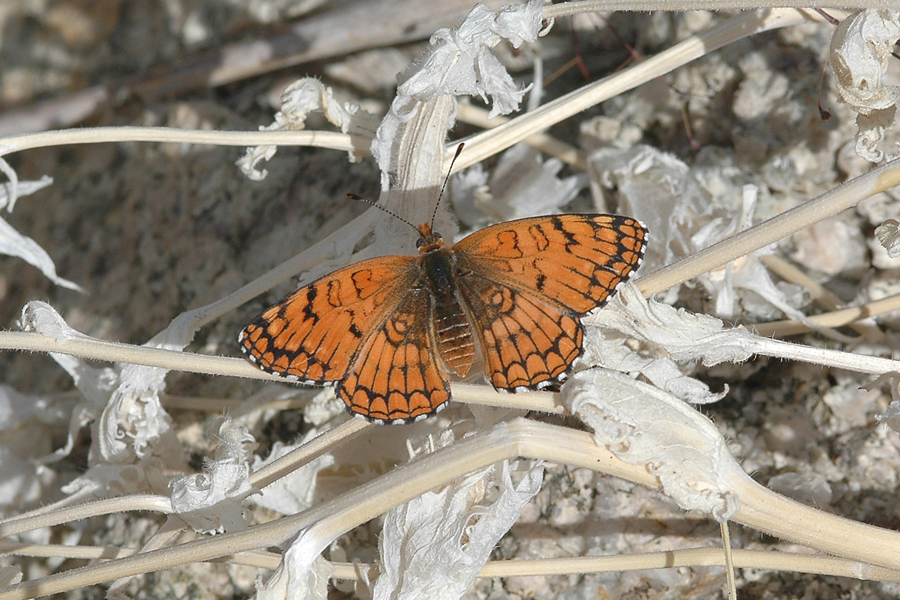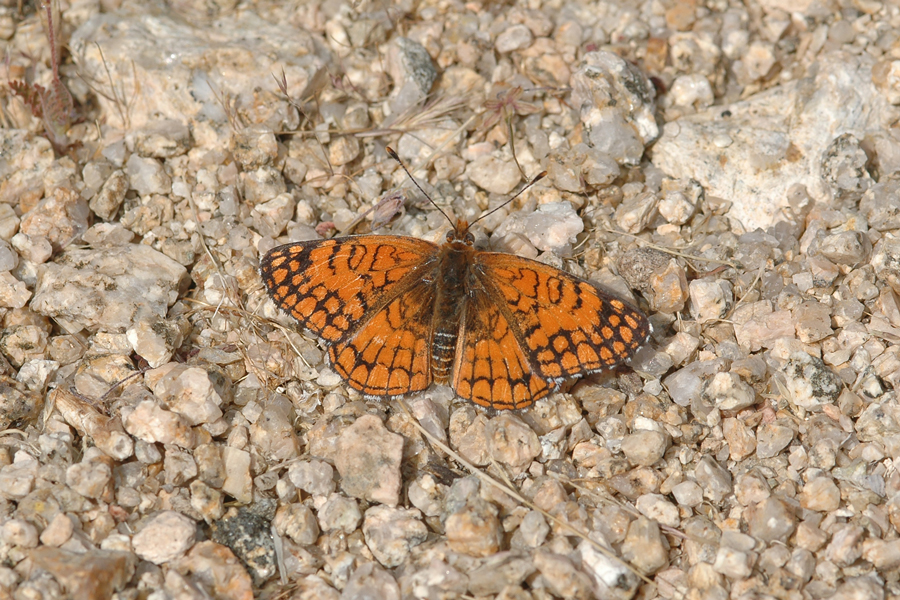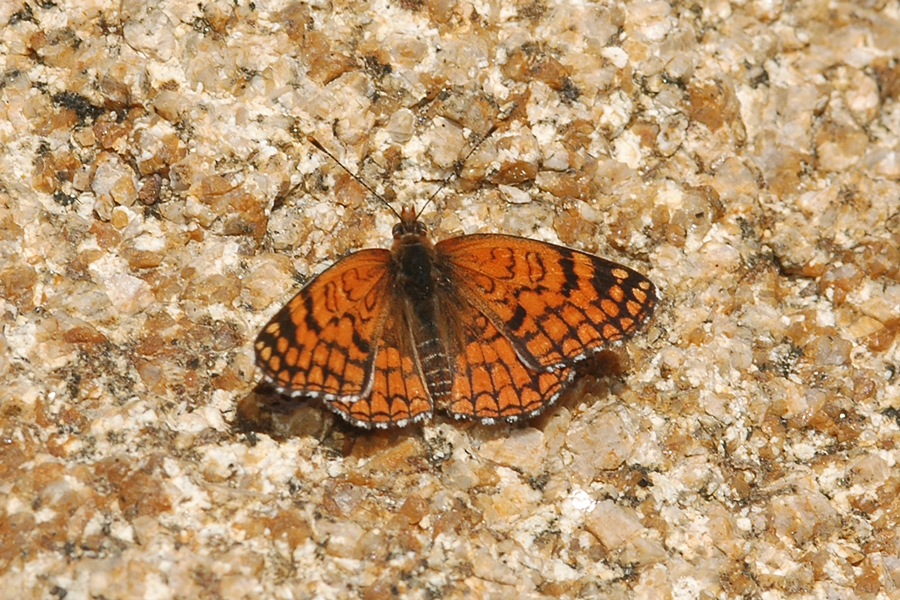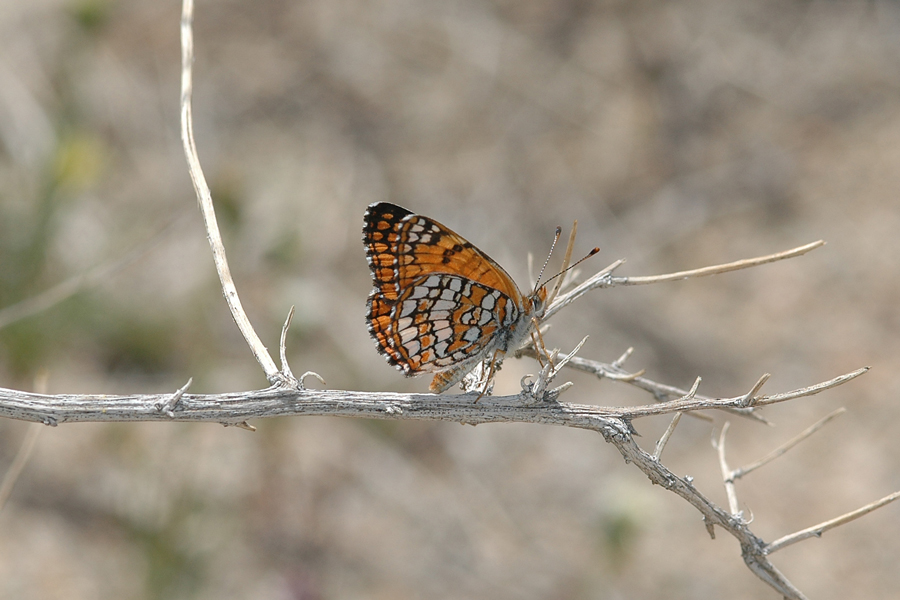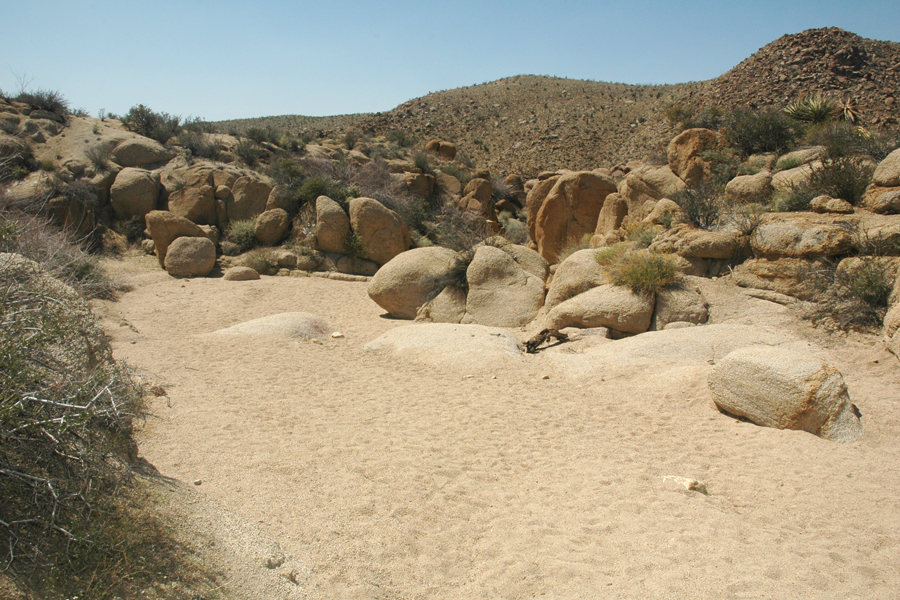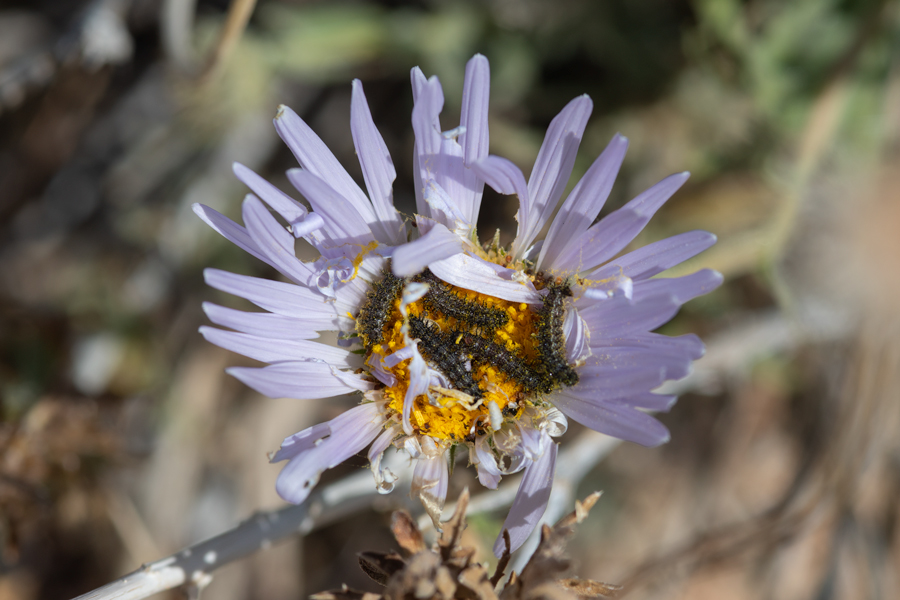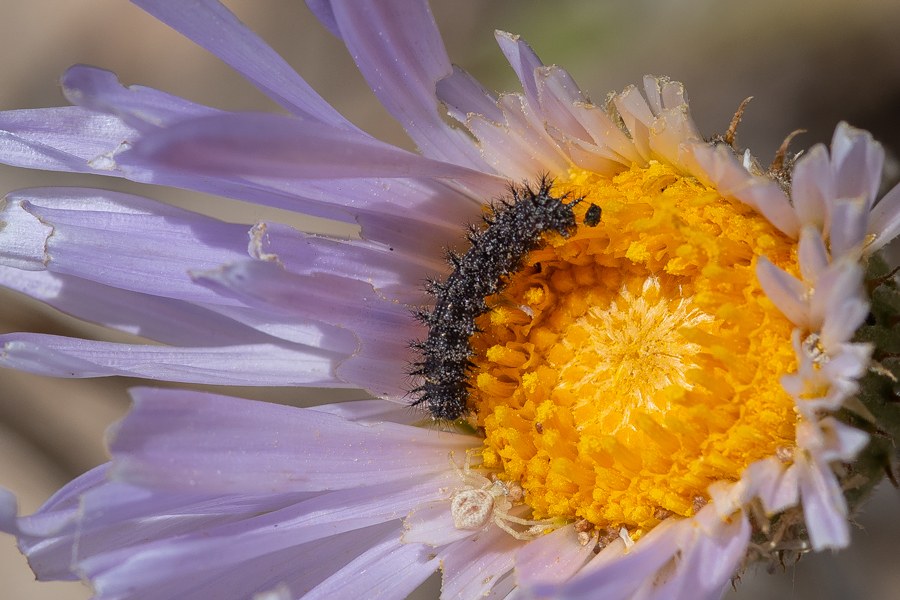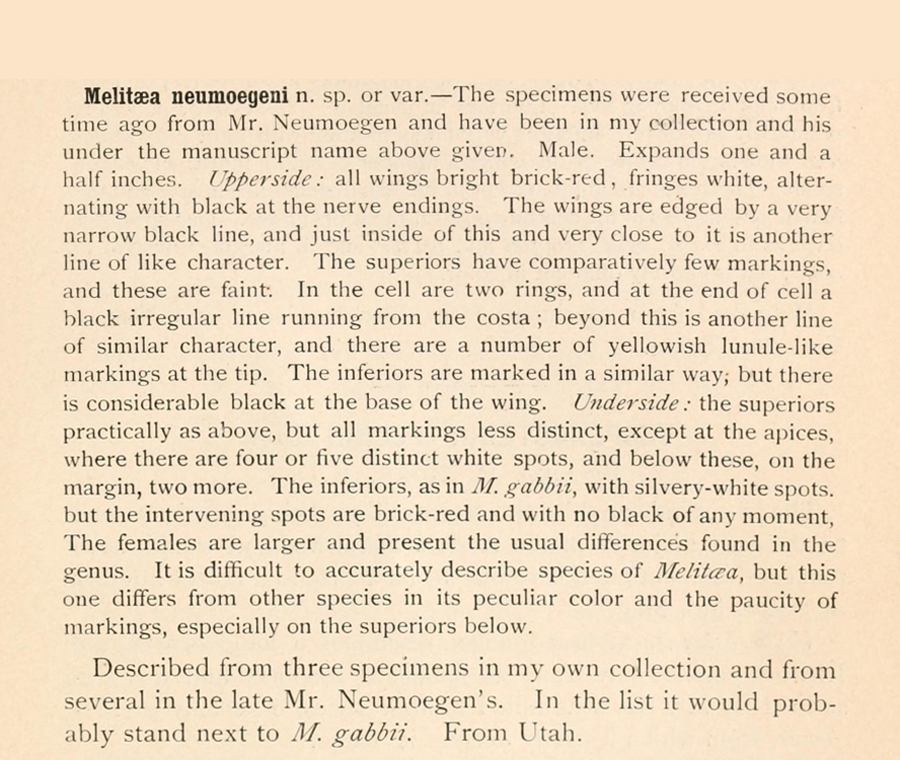Chlosyne acastus neumoegeni
Neumoegen's Sagebrush Checkerspot
Chlosyne acastus neumoegeni males are often found in the spring patrolling desert washes around their larval food plants, generally Mojave aster (Xylorhiza tortifolia) and rayless goldenhead (Acamptopappus sphaerocephalus). I've seen larvae feeding on flowers, sometimes covered with pollen. With good summer rains, they may have a brood late in the year, and I saw some flying in a wash in the Johnson Valley in October of 2022. As with other Chlosyne checkerspots, these feed on their host asters in the early instars, then go into diapause as a mid instar caterpillar. They resume feeding when conditions allow, usually the following spring. Early on larvae are gregarious, but the late instars are usually found alone. When caterpillars are fully developed, they leave the plant to pupate and adults emerge a couple of weeks later.
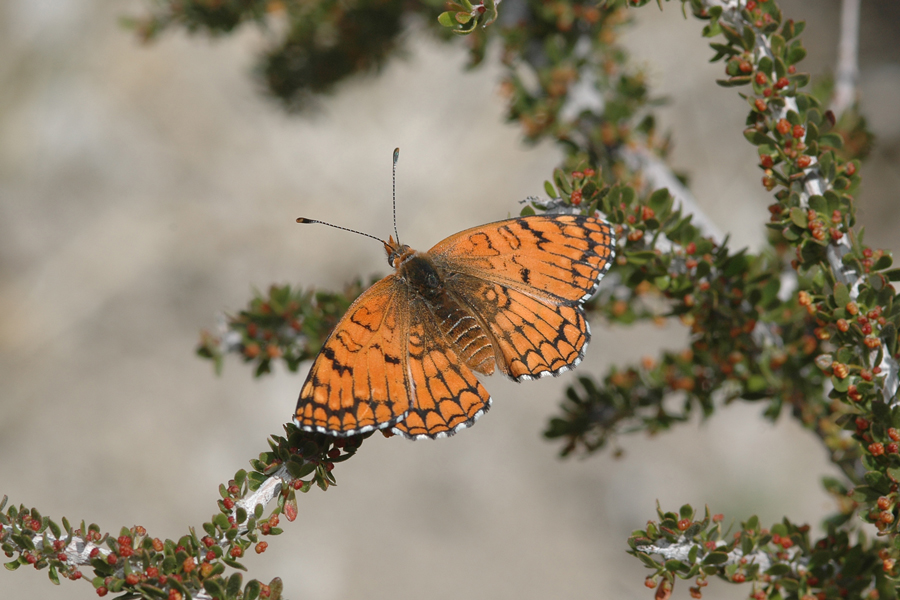
A fresh female 'Neumoegen's' sagebrush checkerspot in a wash near Cottonwood Spring, Joshua Tree National Park, March 29, 2009.
Same 'Neumoegen's' sagebrush checkerspot as above. The beautiful host plant, desert aster, is common in this area. They also use rayless goldenhead, also an aster.
A male 'Neumoegen's' sagebrush checkerspot patrolling a wash at Cottonwood Spring, Joshua Tree, March 29, 2009.
A different male 'Neumoegen's' sagebrush checkerspot at Cottonwood Spring, Joshua Tree, March 29, 2009. Males patrolling washes are easily found in this area.
Ventral view of another Chlosyne acastus neumoegeni. Rock Corral, San Bernardino Co., April 13, 2008.
Habitat of Chlosyne acastus neumoegeni. The host desert aster grows here, and a male was patrolling this sandy spot. Near Cottonwood Spring, Joshua Tree, March 2009.
Pollen-covered caterpillars of Chlosyne acastus neumoegeni on desert aster. Juniper Flats on the California Hiking and Riding Trail, Joshua Tree, April 29, 2022.
Another caterpillar at the same place as above, but nearly two weeks later. May 11, 2022.
The original description of this subspecies by Dr. Henry Skinner was published in 1895 in the Entomological News.
©Dennis Walker

